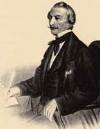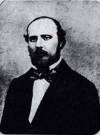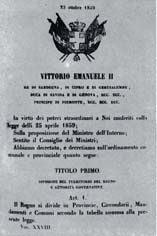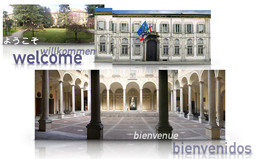150 years of history of our Institution
The Province of Milan celebrates its 150-year anniversary in 2010! The changes and evolution of the Milan area and its inhabitants over the 150-year history of the institution and Country.
The first steps towards the birth of the Province
The first provincial-based administrative system was introduced during the Spanish rule in 1555 in the State of Milan, then composed of the current provinces of Milan, Como, Varese, Sondrio, Pavia and Monza and Brianza. Under the Austrian rule of Maria Theresa and her son Joseph II, the reform of 1786 divided the State of Milan into nine provinces, governed by Imperial Delegates: Milano, Pavia, Lodi, Cremona, Casalmaggiore, Como, Valle Intelvi, Mantova and Terre. For the first time, the Province of Milan thus took on a separate administrative structure.
Following the French Revolution and the accession of Napoleon Bonaparte, state administration was divided into districts, laying the foundations for the modern-day Province. After Napoleon’s downfall, in 1815 the Congress of Vienna restored the Milan area to the Austro-Hungarian Empire under the new Kingdom of Lombardy-Venetia where the city of Milan was one of the two capitals along with Venice.
The birth of the Province of Milan
In 1859 after the second War of Independence, Lombardy became part of the Kingdom of Sardinia and the local administrative system was established that same year through the “Rattazzi Decree.”
 The first administrative elections on January 15, 1860 established the Province of Milan and the first Council meeting was held on the following 5th of March. The first provincial council chairman was Count Cesare Giulini della Porta while Massimo D'Azeglio, famous scholar and politician from Piedmont, was nominated Governor by the monarch. Voting rights at that time were reserved to male citizens over 21 of a certain “class” or certain profession.
The first administrative elections on January 15, 1860 established the Province of Milan and the first Council meeting was held on the following 5th of March. The first provincial council chairman was Count Cesare Giulini della Porta while Massimo D'Azeglio, famous scholar and politician from Piedmont, was nominated Governor by the monarch. Voting rights at that time were reserved to male citizens over 21 of a certain “class” or certain profession.
of the 1890's.
After the Italian Unification, the provincial administrations was primarily occupied with the following tasks:
• secondary and technical education;
• maintenance of the poor “insane”;
• provincial road, river and stream works;
• forest preservation and deforestation regulations;
• Municipal and consortium subsidies for beneficial public works;
• provincial road and bridge toll administration;
• provincial monument and archive preservation;
• hunting and fishing regulations.
 During their first twenty-years, the provincial council was mainly occupied with the tasks of documenting, collecting statistic data, conducting technical studies on some fundamental topics concerning the rail, river canal, education and welfare systems. These years where characterised by the creation of numerous Study committees that led to some significant decisions: within a three-year period, 80 night and Sunday schools were opened in just as many rural municipalities in the province, 300 teachers took refresher courses and 29 elementary schools were opened in places that were previously without.
During their first twenty-years, the provincial council was mainly occupied with the tasks of documenting, collecting statistic data, conducting technical studies on some fundamental topics concerning the rail, river canal, education and welfare systems. These years where characterised by the creation of numerous Study committees that led to some significant decisions: within a three-year period, 80 night and Sunday schools were opened in just as many rural municipalities in the province, 300 teachers took refresher courses and 29 elementary schools were opened in places that were previously without.
Railways, such as the Milan– Vigevano and Monza – Lecco lines, were designed and constructed and the Gotthard pass was inaugurated in 1882.
The new provincial Mombello insane asylum and provincial Children’s home were constructed according to modern criteria, closing the “foundling wheels” where illegitimate children were commended.
 In this period, the silkworm industry grew with the introduction of numerous spinning mills and textile industries throughout the Province.
In this period, the silkworm industry grew with the introduction of numerous spinning mills and textile industries throughout the Province.
Numerous newspapers were established in the information world in Milan: in addition to the Unità d’Italia, the leading and most reputable Italian newspaper, the Corriere della Sera, was founded on March 5, 1876 by Emilio Torelli-Viollier who directed it until 1898.
The first popular elections for the provincial Deputyship President were introduced in 1889. The first elected President was Francesco Gorla. Following this new law, Provincial administration was organised as follows: the Council, the Deputyship, the President of the Deputyship. The Council remained in office for five years. The suffrage reform granted voting rights to anyone who paid at least 5 Lira in direct taxes.
Read more
- Part 1 - The first steps towards the birth of the Province - The birth of the Province of Milan
- Part 2 - Development during the turn of the century industrial revolution
- Part 3 - The First World War and the arrival at Palazzo Isimbardi
- Part 4 - The rebirth of democracy
Data creazione: Tue Dec 15 10:49:14 CET 2015


